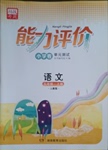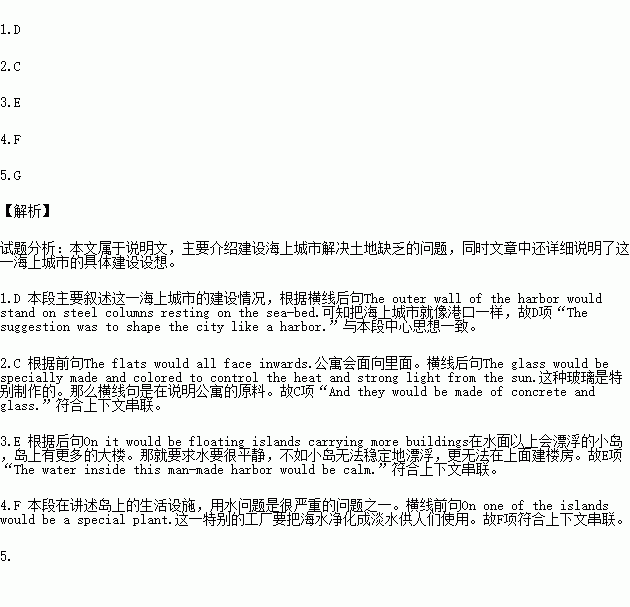题目内容
根据短文内容,从短文后的选项中选出能填入空白处的最佳选项。选项中有两项为多余选项。
One answer to the questions of land shortage was suggested by a committee some years ago. A city was to be built at sea, housing 30000 people.
1. The outer wall of the harbor would stand on steel columns resting on the sea-bed. Naturally this could only be where the water was fairly shallow. The people would live in flats in the fifty-meter high outer wall. The flats would all face inwards. 2.The glass would be specially made and colored to control the heat and strong light from the sun. The planners called this water the lake.
3. On it would be floating islands carrying more buildings : a hospital, two theaters, a museum, an art exhibition hall and a church. On one of the islands would be a special plant. 4.
People living in the city could move around on small boats dnven by electricity. 5. There would be platforms outside the main wall for ships bringing supplies. People could also travel to the mainknd by molorboat or water plane.
A. Fresh water is supplied to the city.
B. TTie city was away from the mainland.
C. And they would be made of concrete and glass.
D. The suggestion was to shape the city like a harbor.
E. The water inside this man-made harbor would be calm.
F. It will take the salt out of sea water and turn it into fresh water.
G. Thus there would be no air pollution from the burning of petrol.
 能力评价系列答案
能力评价系列答案

